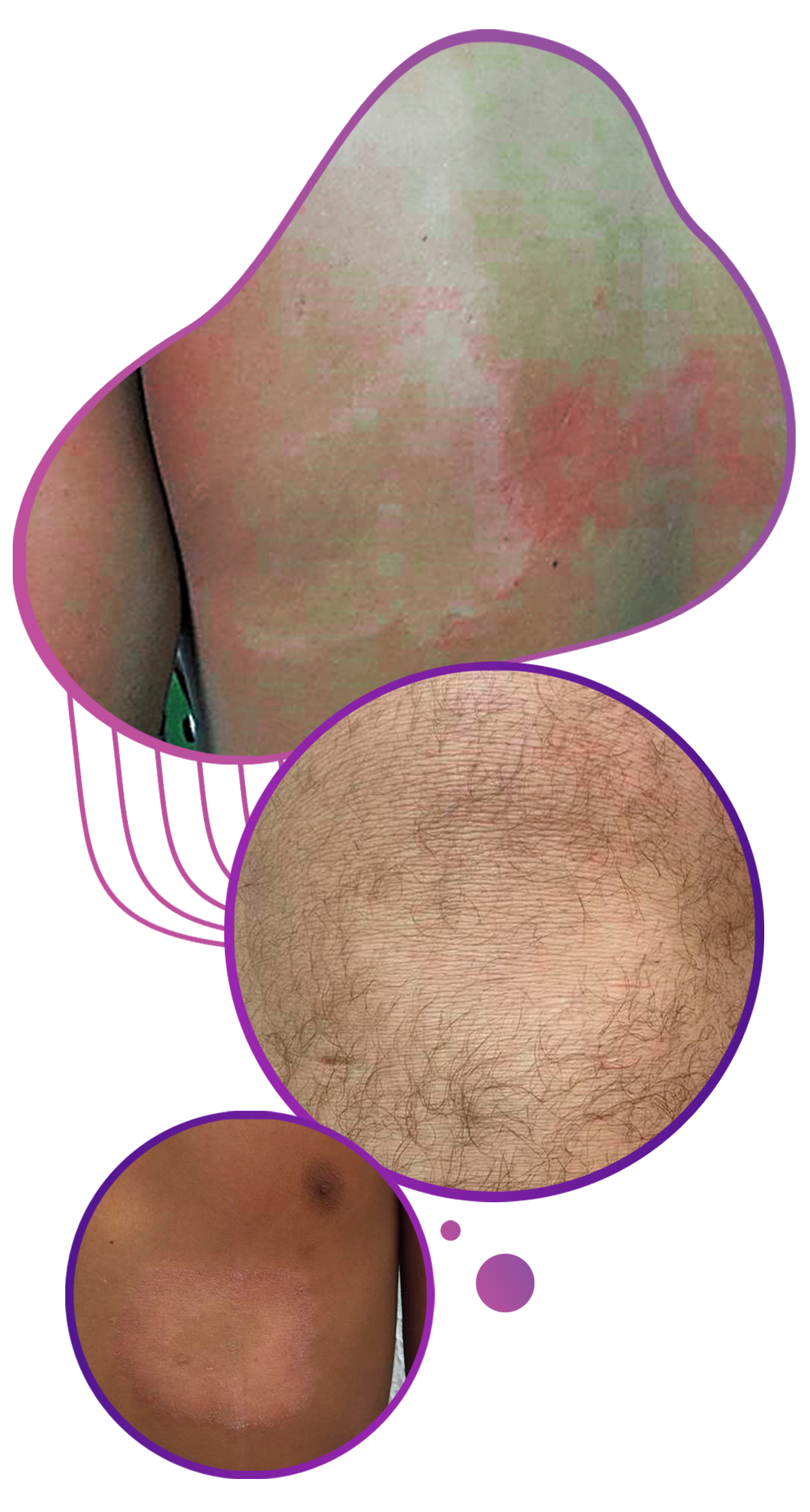Diagnose
and take care.
The Leprosy Suspicion Questionnaire (LSQ) was created to help in the early diagnosis of new cases of the disease.


About
The importance of knowing the disease
Leprosy is a chronic bacterial disease, that often acts in silence, caused by Mycobacterium leprae, whose transmission occurs through the upper airways of patients without treatment. It acts preferentially on the skin and peripheral nerves and can cause physical deformities and disabilities, which are mainly responsible for stigma and discrimination against people affected by leprosy.An infectious-contagious disease in which, many times, it acts in silence. Leprosy, popularly known in the past as leprosy, is a chronic and communicable disease caused by a bacterium called Mycobacterium leprae or Hansen’s bacillus. Acting preferentially on the skin and peripheral nerves, the disease gives high power to cause disabilities and physical deformities, which are mainly responsible for stigma and discrimination to infected people.
The disease is curable and treatment is free and offered by SUS in all Brazilian health units.
The World Health Organization classifies the disease according to the bacillary load in “paucibacillary leprosy”, with few clinical manifestations on the skin and peripheral nerves and few or no bacilli found on complementary tests (skin scraping and skin biopsy); and “multibacillary leprosy”, characterized by several lesions affecting the skin and nerves, in addition to the presence of bacilli easily detectable on complementary exams. The untreated multibacillary form has a greater potential for transmission compared to the paucibacillary form.
Leprosy is primarily a neural disease and therefore the importance of alert about the neural symptoms such as numbness, tingling, pricking, nerve pain, among others. On the skin, the disease can present with spots lighter than normal skin color, sometimes difficult to recognize, or reddish spots and, even, nodules on the body. All areas of lesions show changes in sensitivity (to touch and/or pain and/or temperature), in addition to localized irregular patches of circumscribed hair loss and/or the absence of sweat. The disease can also affect the motor part of the nerves, which can lead to muscle weakness in the hands, feet and eyelids. Leprosy is the second infectious cause of blindness in the world.
Recognize the manifestations of the disease
The suspicion of leprosy can be made by the health team or by the patient himself. The diagnosis must be made by the doctor and involves the dermatoneurological clinical evaluation of the patient, through sensitivity tests, palpation of nerves, evaluation of motor strength, among others.
To assist in the assessment and early diagnosis of new leprosy cases in the community and especially among To assist in the assessment and early diagnosis of new leprosy cases, the Leprosy Suspicion Questionnaire (LSQ) was developed. LSQ is a questionnaire posing questions about leprosy symptoms and signs, in addition to inquiring about the family history of the disease.
For the authors of the questionnaire, Dr. Fred Bernardes Filho and Prof. Dr. Marco Andrey Cipriani Frade, the implementation of the questionnaire has proved to be an important instrument of health education on leprosy in the community and among health professionals and students.
You can download the questionnaire for free, however, the authors have both moral and property rights over its creation. To use LSQ for any purpose, an authorization is required. Click on the button below and fill out the form to request the questionnaire.

